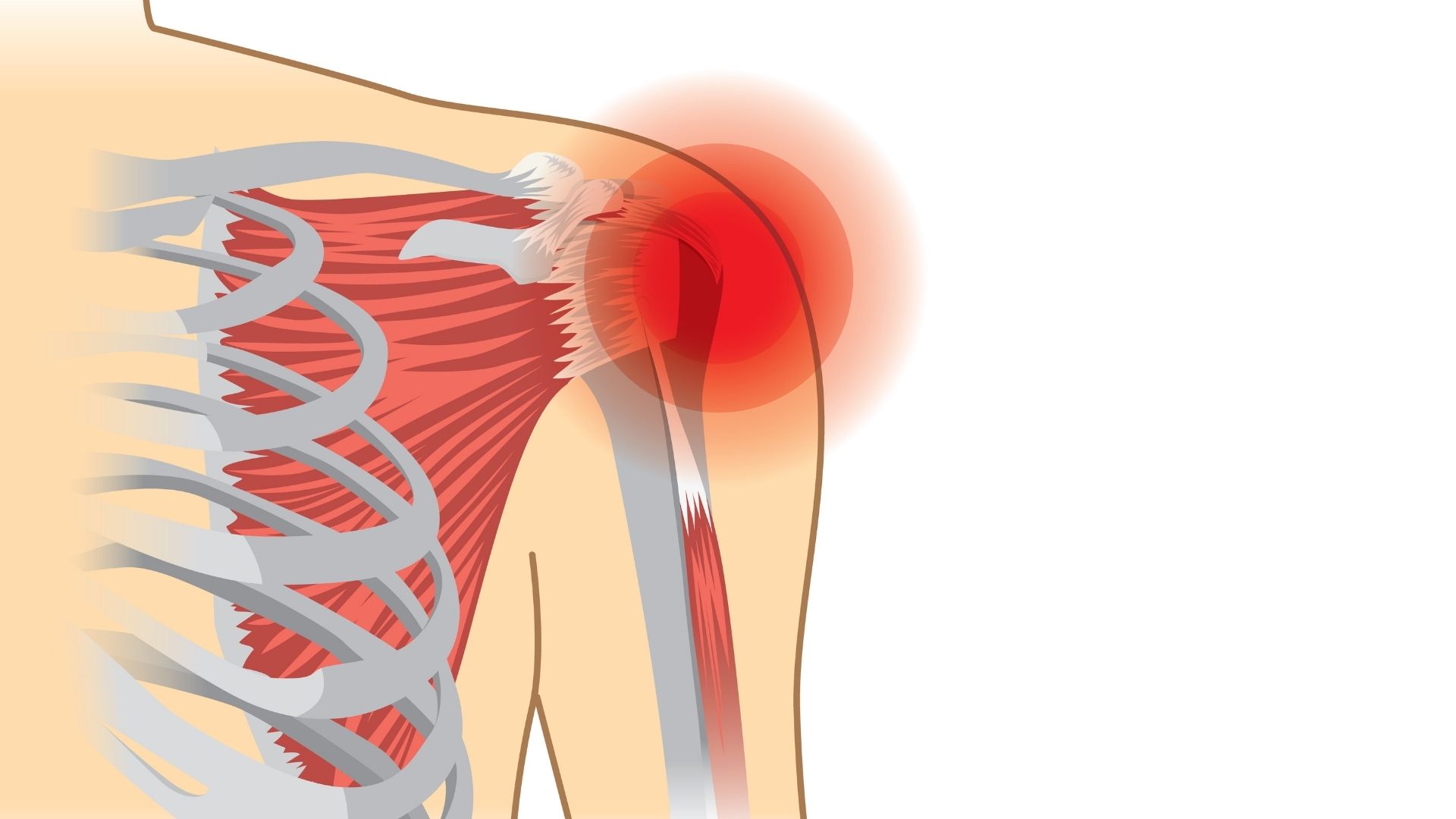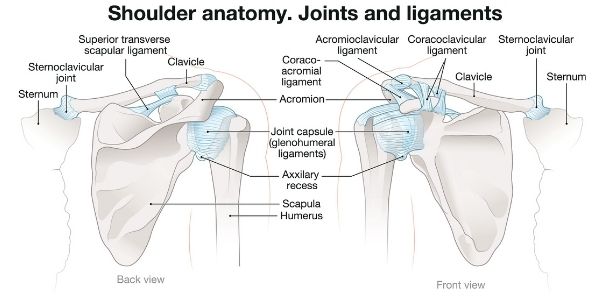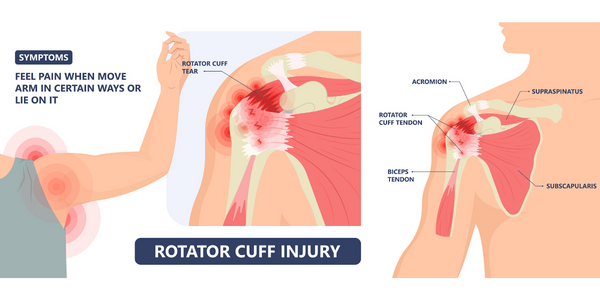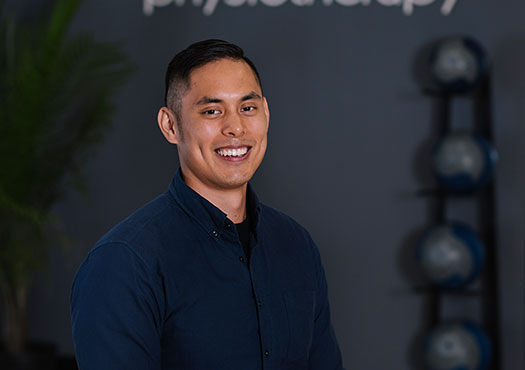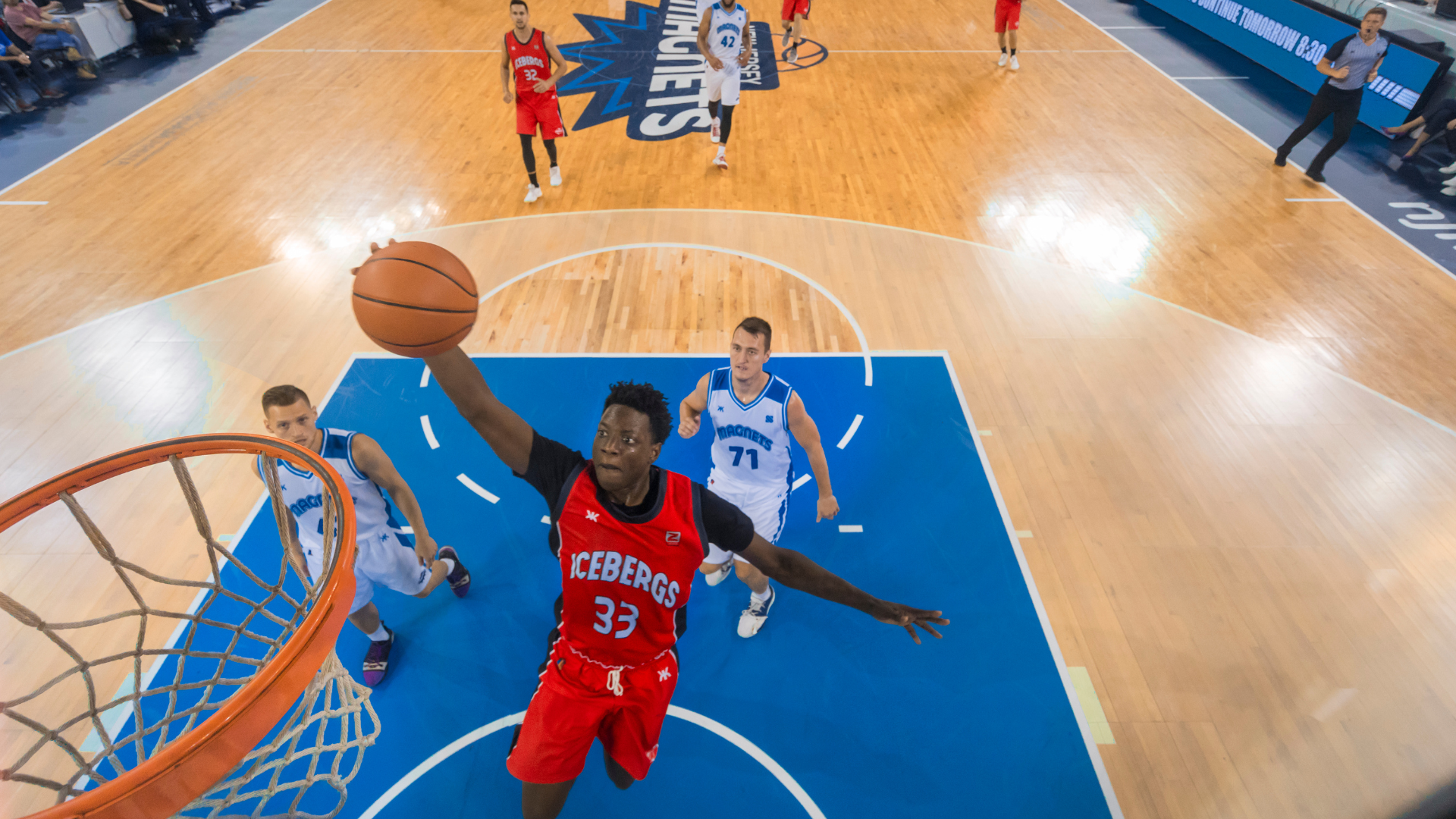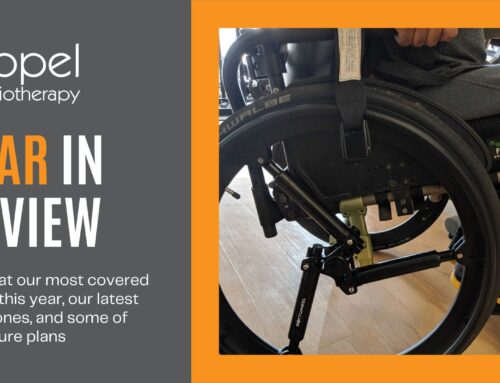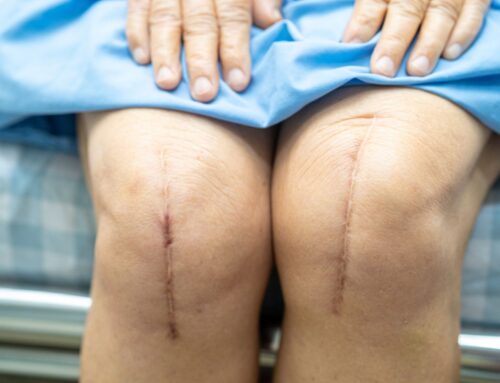Rotator cuff tear injuries are one of the most common types of shoulder injury. They can occur both acutely and from chronic stresses to the shoulder. Significant pain and disability in the shoulder joint can result from these types of injuries. In this article, we look at the shoulder anatomy, rotator cuff tear symptoms, causes and treatment.
Rotator Cuff Muscles
The rotator cuff is comprised of four smaller muscles in the shoulder: supraspinatus, infraspinatus, teres minor, and subscapularis. Each muscle plays its part in ensuring the head of the humerus (arm bone) is centered in the socket of the shoulder joint. The shoulder joint is essentially a ball-in-socket joint and the rotator cuff muscles help to provide stability, movement, and rotation. You have a rotator cuff complex for each shoulder.[i]
Rotator Cuff Tear Injury
Rotator cuff tears can occur through repetitive stress injuries through sport, hobbies, work, and improper functional postures. In addition, rotator cuff tears can occur through trauma (motor vehicle accidents, falls).
Trauma to the shoulder area such as from a fall or high-speed collision, or falling on an outstretched hand (FOOSH-ing yourself) on slippery ice are examples of ways people hurt their rotator cuffs. Repetitive duties at work or sport that require turning or twisting of the shoulder joint such as during overhead reaching and manipulating tools or objects with large amounts of torque and speed can cause rotator cuff tears as well.
Clinically, there is also an association with age and naturally deteriorating shoulder musculature, mainly associated with partial thickness tears. A rotator cuff tear can occur acutely to healthy tendons via an accident or be degenerative in an older adult that develops over time.[ii]
Rotator Cuff Tear Classifications
There are different severities of rotator cuff tears with partial thickness (incomplete) and full-thickness (complete) tears being the main classifications. Partial thickness tears mean that the tendon is only torn part-way, meaning the muscle is still in touch with the bone it is acting on.
Partial thickness can be further classified into grades 1 (3mm depth), grade 2 (3-6mm deep), and grade 3 (> 6mm deep or > 50% thickness of tendon) and their location can be classified as bursal (outer- facing the deltoid) or articular (inner- facing the joint) surfaces of the rotator cuff tendon. A partial thickness tear can be viewed as a tear that damages the tendon, but does not fully tear through it (3).
Full-thickness tears can be classified by their size across the tendon. This means that the tendon has a measurable hole at a specific location. Full thickness tears can be graded using the following: Grade 1 (<1 cm), Grade 2 (1-3cm), Grade 3 (3-5cm), Grade 4, no cuff is present .[iii]
Rotator Cuff Tear Symptoms & Signs
Having a rotator cuff tear may lead to pain with movements of the shoulder, weakness, decreased range of motion, and feelings of instability in the shoulder joint. There may even be pain felt in different parts of the body, like the elbow, forearm, and even wrist or hand.
Movements that require turning or twisting of the shoulder and weightbearing may be painful or weakened to a person who experiences a rotator cuff tear. In addition, daily activities such as reaching overhead or reaching to the side of the body may be limited by pain or weakness. Some may also experience pain in the shoulder when at rest or when sleeping at night.[iv]
Torn Rotator Cuff Treatment
Physiotherapists can assess and provide treatment to people immediately after a rotator cuff tear. In addition, physiotherapists can direct physiotherapy care and communicate a diagnosis to identify the causes for a person’s ongoing symptoms.
The diagnosis can be made with appropriate training. Follow-up diagnostic imaging may be helpful for the clinician and the client. This can be coordinated with the client and their medical team.
After determining the severity and location of your rotator cuff tear, your physiotherapist will also observe and analyze other structures. These may include your shoulder, cervical spine, and upper back posture/ movement as these structures are highly related to one another.
Your physiotherapist will provide pain education and management, in addition to manual therapy or hands-on treatment. This will help address any restrictions you may have with your shoulder.
They will be able to help you determine what movements you can begin to do and what movements you can continue to limit to help rehab your shoulder joint. Your physiotherapist will continue to build up the movements and exercises you do to improve the health of your rotator cuff and its integrity.
As your treatment progresses and your shoulder gets stronger and less painful, your physiotherapist may recommend rotator cuff specific exercises. At the beginning, these exercises will be directed to maintaining range of motion and decreasing pain, limiting the amount of stiffness that can come with a rotator cuff tear (link to frozen shoulder).
Next, the therapist may begin to ask you to activate the muscles associated with the rotator cuff so that tension can develop through the muscle belly and associated tendons, if appropriate.
While doing this, your physiotherapist will also educate you and teach you movements that are important to other supporting structures of the shoulder. Shoulder blade stability exercises, neck and upper back postural exercises, and weight bearing through the upper extremity are examples of exercises that might be appropriate.
Lastly, functional movements and exercises are reintroduced to get you back to doing what you want to do! If physiotherapy is applied appropriately to someone with a rotator cuff tear, and the severity of the tear is also deemed appropriate to continue exercise and physiotherapy, it may be a successful means of limiting the need for surgery.[v]
Let our experienced and skilled physiotherapists help you manage your shoulder pain and improve your movement and strength to help you get back to living fully and pain- free.
References
[i] Gray,H. Anatomy of the Human Body. Philadelphia: Lea and Febiger, 1918; Bartleby.com, 2000
[ii] Rotator Cuff Tears, Ortho Info, American Academy of Orthopaedic Surgeons
[iii] Partial Thickness rotator cuff tears : Arthroscopic classification by Ellman Ellman H, CORR, (254) 64-74, 1990
[iv] Rotator Cuff Tears, Ortho Info, American Academy of Orthopaedic Surgeons
[v] Edwards, P. et al 2016. Exercise Rehabilitation in the non-operative management of rotator cuff tears: A review of the literature. Int J Sports Phys Ther. 2016 Apr; 11(2): 279–301.
Written by

